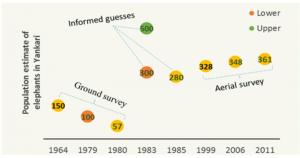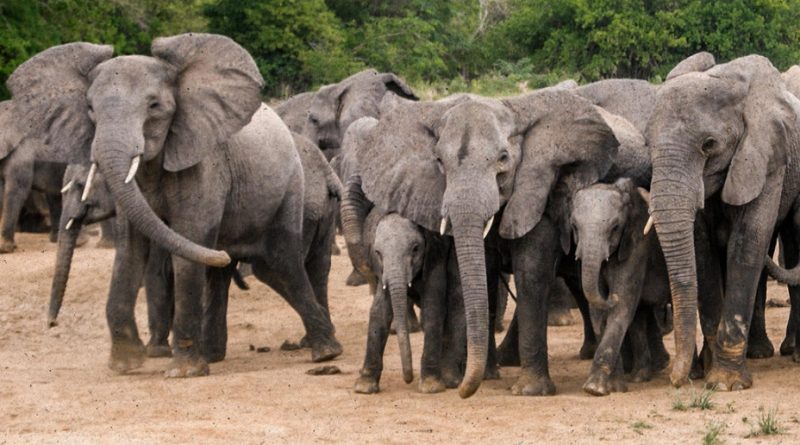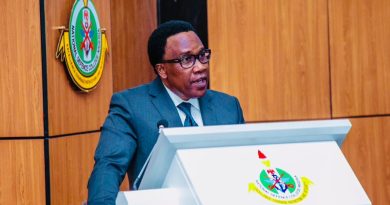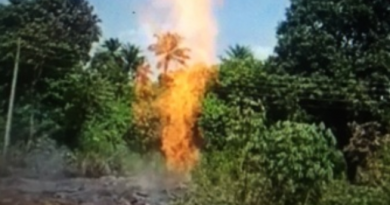PERIL OF NIGERIA’S ELEPHANTS AND THE PROSPECTS FOR RECOVERY
Salamatu Jidda -Fada
The Daily Trust and the Punch newspapers reported on Wednesday, the 5th of August 2021, on the interception of elephant ivory (846 kg) and pangolin scales (7.1 tonnes) and claws (4.6kg) worth USD 54 million (about N22 billion) in Lagos by the Nigeria Customs Service (NCS). Information is unclear as to whether the source of these consignment is from within the country or elsewhere. Nigeria is known as a wildlife transit hub, and according to the report, this is the ninth seizure supported by the Wildlife Justice Commission in the last three years. Nigeria is also signatory to the Convention on International Trade in Endangered Species of Wild Fauna and Flora (CITES). This arrest did not come as a surprise to us, the Conservationists in Nigeria as we have recently, during the celebration of the International Day of Biological Diversity on 22 May called on both the Conservator General of Nigeria Parks Service, Dr Ibrahim Goni and the Director General of NESREA, Prof Aliyu Jauro during the webinar organised by the newly established Coalition of Biodiversity Conservationists in Nigeria (CBCN) to intervene in the elephant crisis in Nigeria.
In my presentation at the occasion, titled ‘We are part of the solution’, I presented my study on trends in elephant population in Yankari Games Reserve, a recent study we conducted on the decline and conservation status of elephants and other large mammals, providing information on personal and collective observations, from colleagues and friends actively involved in conservation.
Furthermore, we reiterated the recent report published on the 25th of March 2021 by the International Union for Conservation of Nature (IUCN). The report revealed that the African forest elephant (Loxodonta cyclotis) and savanna elephant (Loxodonta africana) are now listed as Critically Endangered and Endangered respectively on the IUCN Red List of Threatened Species due to population declines over several decades from poaching for ivory and habitat loss. It is worth noting that both species of the African elephant exist in Nigeria. The Worldwide Fund for Nature (WWF) has reported that the greatest threat to African elephants today, is wildlife crime, primarily poaching for the illegal ivory trade. Elephants in Nigeria are facing the same peril.
It is important to reflect on the critical role elephants play in the ecosystem, economies and in our collective imagination all over the world. Elephants help to maintain suitable habitats for many other species. WWF reports that in central African forests, up to 30% of tree species may rely on elephants for dispersal and germination.
Despite the huge outcry by big international organizations like WWF, IUCN, CITES, Elephant Protection Initiative (EPI), etc. on the decline of elephant populations, threats to elephants remain.
The largest population of elephants in Nigeria is reportedly found in the Yankari Games Reserve, Bauchi State.
Several years ago, I carried out an analysis of the various elephant surveys that have been conducted in Yankari to ascertain the trend in elephant population between 1964 and 2011. Although there was challenge of comparability of survey methods, results showed that there were at least 361 elephants in 2011.

Since the last survey a decade ago, I am not aware of any detailed surveys to date in Yankari. However recent estimates by the Wildlife Conservation Society (WCS) suggests about 100 remaining savannah elephants in Yankari, a decline from 350 between 2006 and 2015.
During the period 2015-2018, I was engaged as a consultant by the Bauchi State Government to update the Reserve’s 30-year-old Management Plan. I made several efforts working with rangers to search for elephants, but to no avail – a far cry from previous years.
Records also show a prevalence of human-wildlife conflicts (HEC) in communities around Yankari, and we have witnessed crop raiding by elephants, baboons, and other animals. My team and I have personally visited Dimis and Mainamaji local communities on account of crop raids. These negative interactions can result in retaliatory killing of elephants, further contributing to the threats faced by elephants. A collared elephant was reported killed in 2012 or 2013 by local farmers in a community near Yankari in retaliation for crop raiding.
Similar reports on forest elephant decline also stem from Omo Forest Reserve and Okomu National Park further south, with records of only around 30 elephants in each site in recent studies. Also, the Elephant Protection Initiative (EPI) only recently, raised concerns regarding fast depleting elephant populations in Nigeria after local hunters shot dead a 4th elephant near Omo forest in Ogun State. EPI added that this is the 4th elephant killed in two years.
Long-term management of these conflicts can only be achieved by combining a suite of measures that address the drivers or root causes of such conflicts and the associated social dynamics.
The pertinent question is, what can be done to protect elephant populations and other threatened species in Nigeria to enable their recovery? The economy of several countries in Africa benefit heavily from nature-based tourism industry. This is possible in Nigeria as well if we promote wildlife and ensure the survival of important species such as the elephant.
Perhaps one of the most urgent steps is a nation-wide survey to estimate the population of elephants in Nigeria. We need to know the status of Nigeria’s elephants in order to design and develop suitable conservation strategies. Central to the aforementioned is the need to build local capacity for long-term sustainability of wildlife conservation in Nigeria. We see, a good example in the A.P. Leventis Ornithological Research Institute (APLORI), where an excellent crop of Conservationists has been produced over time.
An equally important step is to identify conservation targets and strategies for the conservation of these elephant populations to enable their recovery. This will involve strengthening the management of protected areas.
A USAID/Nigeria analysis of tropical forest and biodiversity in Nigeria recommends that ‘The Government of Nigeria… mobilize NGOs and other implementing partners to actively manage protected areas’.
There is the need to work collectively with the Government, Media, Corporates, and industry, Local and International NGOs, Communities and Traditional leaders, Universities and Research Institutes, Women and Youth groups. Similarly, it is high time we pool our expertise and create the opportunity for Nigerian conservation experts to contribute to biodiversity conservation. Dr Mary Molokwu-Odozi, for example, a Nigerian and the Country Director of Fauna & Flora International (FF1), an international NGO, in Liberia. She led the development of the National Elephant Action Plan (NEAP) for Liberia, working with the Liberia National Species Working Group, a network of conservationists in Liberia, and facilitated the endorsement of the NEAP by the former Liberian President. In Nigeria, we have the Nigerian Conservation Foundation (NCF) and other local NGOs who are working tirelessly to ensure the protection of Nigeria’s wildlife. The newly established Coalition for Biodiversity Conservationists of Nigeria (CBCN) consists of individuals and organizations that bring vast experience and expertise in conservation. I believe this crop of people can be brought together to contribute to saving Nigeria’s elephants.
In Conclusion, there is the need for transparency and accountability for all who are working to conserve Nigeria’s biodiversity. We can only reverse this downward trend in Nigeria’s elephant populations if we come together

Cover Photo Credit: Wildlife Conservation Society




